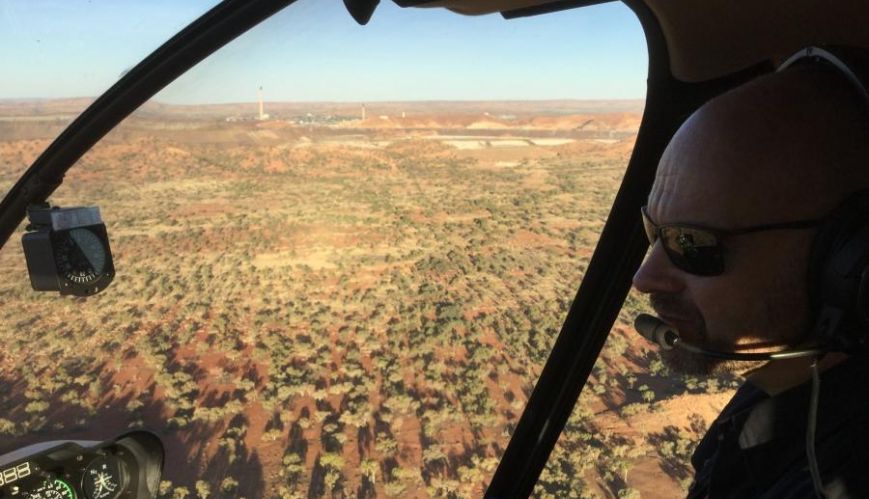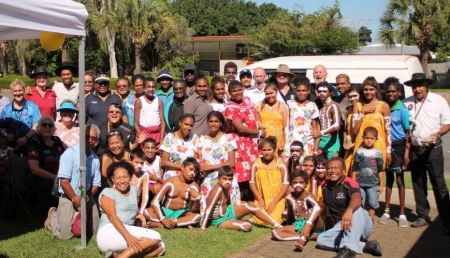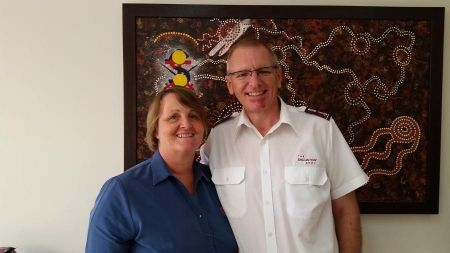QUEENSLAND - meeting varied needs in a vast land

QUEENSLAND - meeting varied needs in a vast land
2 February 2018
Lieutant Simon Steel, based in Queensland's Mt Isa, serves as part of the Outback Flying Service.
The state of Queensland dominates the north-east of Australia, with a coastline stretching almost 7000km and a land mass covering more than 1.85 million sq km.
So vast is the state that there are corps in Victoria that are closer (approx. 1450km) to the capital, Brisbane, than Cairns Corps (1700km) in the far north of Queensland.
According to Queensland’s divisional leaders, Lieutenant-Colonels David and Sandra Godkin, the state is so huge and so varied that it is a place of multiple personalities. “Queensland’s geography and culture is so diverse from place to place,” says Lieut-Colonel David.
“We have the Gold and Sunshine coasts so close to Brisbane, yet so different. There are the satellite cities of Brisbane, the scattered regional centres and remote rural communities. The enormous distances present unique challenges to our local centres and communities, but Queenslanders are resilient and community-minded. They love their state and stick together to support it.”
From Indigenous ministry in Cairns, ministry with Chinese people in Brisbane, the Outback Flying Service in Mt Isa and Dalby, thriving youth outreach in the Lockyer Valley, anti-trafficking and anti-slavery training in Bundaberg, and rural ministry in Emerald, The Salvation Army in Queensland is serving unique communities and doing “whatever it takes” to change people’s lives.
Key ministries
- Indigenous ministry in the division, under the state’s coordinator for Indigenous Engagement, Lucy Davis, is growing in both rural and metropolitan centres and is a focus area. “Lucy is creating warm and open spaces where Indigenous people feel comfortable and connected,” says Lieut-Colonel Sandra. “This is not about programs, but about listening, learning and growing together.” (pictured right: Atherton Tablelands Corps is one of many corps actively who observe Reconciliation Week)
- The Brisbane-based Youth Outreach Service (YOS), since its inception in 1987, has helped transform the lives of more than 60,000 young people through the support and guidance of specialist educators, case managers, support workers, mentors and volunteers. “From its humble beginnings 30 years ago, YOS now operates a non-state independent school, tailored education programs, a learner-driver mentor program, and accommodation support services from four campuses in Spring Hill, Stafford, Lawnton and Goodna,”says Darren McGhee, YOS Manager. “We want to show young people who are at risk today that there is hope and support for them to make a positive change for the future.”
- Recovery services centres, homelessness services, prison ministry, court ministry and an extensive rural ministry also play a big part in the Army’s Queensland mission. Rural ministry is particularly challenging in the state. “Many people in rural areas are experiencing great hardship and injustice,” says Lieut-Colonel Sandra. “Many of their communities are in decline and we don’t want to get up and walk out on them too. We have to look at how we can develop healthy faith communities in a way that is different to what we’ve done before and that is a challenge we are working on.”
- Research is also in the early stages for a new Streetlevel plant on the north side of Brisbane, under the leadership of Captain Narelle Unicomb. “The Streetlevel model is the grassroots Army, where a lot of our kingdom goals will be met,” says Lieut-Colonel David.

Divisional vision
“The Australia One Vision Statement – ‘Wherever there is hardship or injustice, Salvos will live, love and fight alongside others to transform Australia one life at a time with the love of Jesus’ – is perfect for Queensland and is an umbrella under which all expressions of the Army here can sit comfortably,” adds Lieut-Colonel David. “This is in the forefront of our thinking wherever we travel around the state.”
In line with this, the Army in Queensland is embracing areas of ministry which reach out to people experiencing particular hardship and injustice.This includes recovery-based congregations and centres. “We are seeing solid kingdom growth in these places, such as Brisbane’s Moonyah, Townsville Riverway Recovery and Fairhaven on the Gold Coast,” says Lieut-Colonel Sandra. “We’re also seeing this growth in corps where people have engaged with those from the community facing injusticeand hardship.”
The Godkins and their team are excited by the focus on this Salvation Army distinctive – reaching out to suffering humanity, helping meet physical needs and introducing people to the gospel. “This is why places like Streetlevel and God’s Sports Arena are seeing people embrace the gospel, because they have this sense of belonging,” says Lieut-Colonel David. “For many, it’s the first time in their life that they feel loved, nurtured and totally accepted for who they are and it’s from this position that we can begin to share the love of Jesus with them. This is what drives us, seeing lives transformed by the love of Jesus.”
Historical overview
The official history of The Salvation Army in Queensland says that Adjutant and Mrs Edward Wright, Staff-Officer Reuben Edwards and Captain Bowerman held meetings in Brisbane in June 1885. Recent research by Salvation Army historian Garth Hentzschel, however, shows that Hester Robinson, an Irishwoman, began the work of the Army in the state prior to 1878, when the organisation was still known as the Christian Mission.
The research also revealed that Captain Peter Cairns arrived in Queensland in 1883 and started additional corps, and that prior to 1885 there were at least six corps operating in Queensland. Over time, Salvation Army corps, outposts and social institutions became so numerous that there were five divisions in the state, with the most northerly corps situated on Thursday Island in the Torres Strait.
Queensland became a single division in 2016.